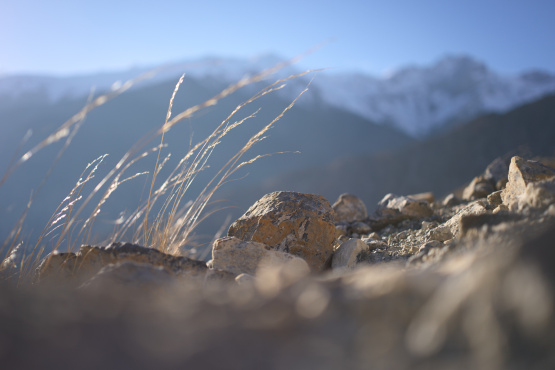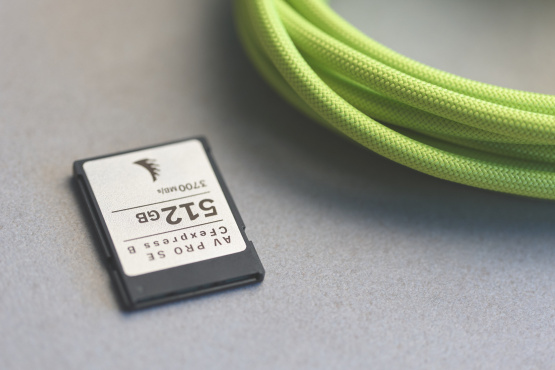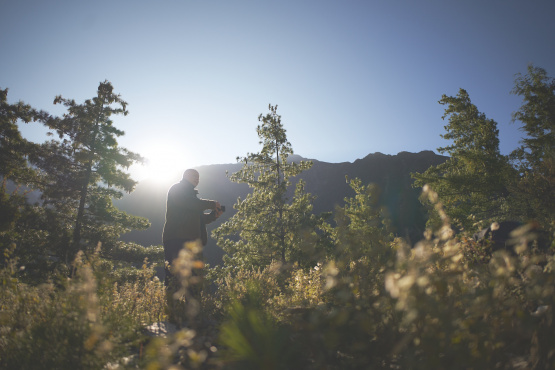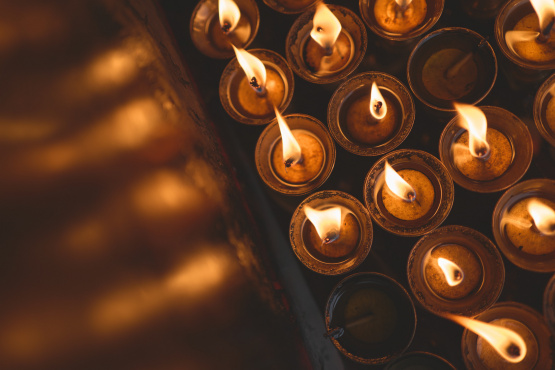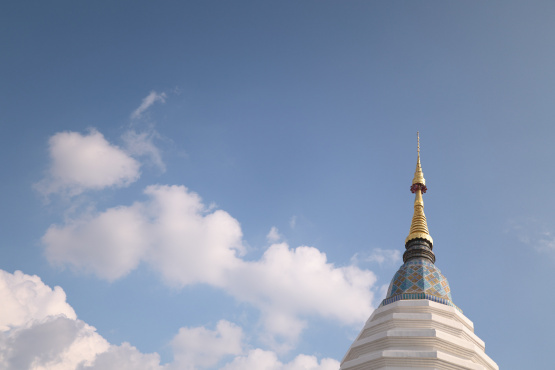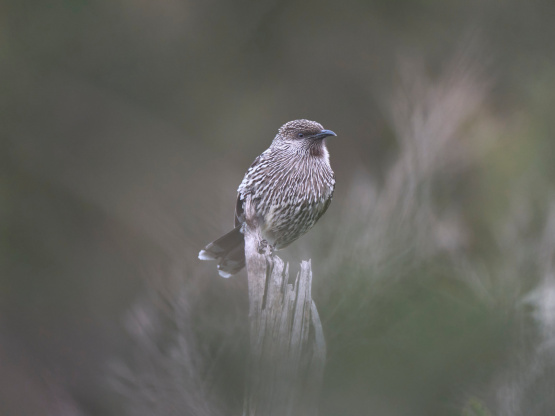One of my guiding principles for travel photography is to look for the light. Regardless of how enthralling an object might be, the light is what makes a photo interesting. In the absence of flash gear and a studio, I spend most of my time working with ‘natural light’, for both my compositions and inspiration.
Light comes in many flavours and quality, and these variances are what brings character to a scene: sunsets at dusk, shade on a sunny day, bright skies filtered beneath a curtain, outlines of a silhouette turned solid by the sun. In every kind of light, I am still looking for one essential ingredient: the angle of the light.
Contrast and Angles
Landscape scenes often rely on strong light and clear skies for bold colours to emerge, but the boldness of those colours are determined by the angle of light. Shooting across the light will reveal the best colour and contrast in any scene. The more you shoot back into the light the more you mask distant features while building layers and depth. You get a very different sense of a landscape depending on your angle on the light.
When I was a child the conventional wisdom was to have the sun at your back always when taking a photograph. Perhaps people were unaware of dynamic range back then or just enjoyed making up simple rules instead of getting creative with their photography. Either way, shooting with the light dead behind you is a recipe for flat and dull captures. Go find an angle to work with instead.
It doesn’t matter how wonderful a landscape of wilderness may be if the light is not working for you. Cloudy days and post-sunset grey are not my favourite conditions for being inspired by landscape. Not unless we end up with a moody sky where the sun breaks through for a few seconds and lights up the scene.
Often when visiting a new location I will follow the sun, literally. I will start walking towards it and wait for a unique combination of light and drama to present itself. I look for where those moments where light meets the dark, and explore the interface between the two. A street scene is only pretty if there’s light to make the magic happen. So start with the light.
Sunset is a unique time of day when the light can either drench the landscape in warm hues, or offer up a sky full of colours when watching the light disappear. Picking an angle into or across the setting sun will give you very different inspirations. Sunsets are usually warmer in tone than sunrise because the angle of light passing through a hazy heated atmosphere will block the cooler wavelengths first. It’s all about angles.
Dawn has its charms as well. In that hour after sunrise, the sun gains strength and turns from warm to white. During this period, we can often shoot towards the sun and let our colours wash out in the excess of light. It’s a different objective to building rich colours, but an effect I really like.
The first few minutes after sunrise offer a unique opportunity, not only because direct light is still very weak and soft, but because the angle across the landscape is dramatically low. It throws a unique perspective on villages, portraits and still life. I once shot an exhibition in the Australian Outback based on leaves and grass photographed in the first few minutes of light. Super low angled post-dawn light throws long shadows with soft intensity, creating only a modest difference in exposures between brightness and shade.
In the Shadows
My favourite angle of light is easy to find almost throughout the day. When the sun is blazing away high above people naturally take shelter, and standing inside a doorway, a window or sitting on a porch that indirect filtered light is often truly lovely. Shelter from the sun creates an effect similar to a giant studio soft-box: soft, abundant and angled. For portraits there is no easier light to work with and no easier light to locate.
Shooting in morning markets across Asia I see this effect a lot. On the very edges of a market, the covered sections are in the shadow yet retain brightness. The light bouncing in from beyond the roof throws a softer light across the scene, and all I have to do is change my angle of shooting to generate the desired angle of light. Standing with the light at my back will lead to flat images and a reduction in both impact and character, but by shooting parallel or towards the outside light I can start to pull a little drama from the available light.
The more you shoot back into that indirect light, the more contrast you create. By changing your angle you change the entire attitude of the scene. This kind of light is perfect for the complex scenes of a busy market, letting some subjects pop out of the frame while others are washed away into the background.
When shooting portraits in a bright outdoors environment I can still turn the sun to my advantage. I place my subjects with their backs to the sun until their entire faces are hidden by their own shadows. I simply expose for those shadows, letting the background blow out, and I get soft skin tones that stand out from the harshness of a hot sunny scene. Bright sections behind the subject blow out and fringe elements between the light and dark turn vivid hues.
I don’t fear letting parts of a frame blow out entirely; I don’t let the histogram determine my exposures.
The most dramatic angle of light is the silhouette, an effect created by letting a strongly backlit scene dominate the exposure. Strong light and sharp focus on the subject outline make for an effective silhouette, so getting the light rushing forward from directly behind the subject is essential. If the light is dull, then so too will the silhouette.
Black and Light
Colour can be misleading to our aesthetic senses and the true essence of light is often best revealed in black-and-white. Grey tones are what matter for a good exposure, not colour tones, and a splash of bright hues can easily distract from what the light is really doing.
The essence of black-and-white photography is building composition with contrast. There is nothing left but an absence or presence, just degrees of grey. In the absence of colour information, the impact of contrast becomes far more tangible. We can more easily see what the light is doing and be more conscious about the character of light we are working with.
Depending on the style we’re shooting for, too much or too little contrast will detract from the image. If you enjoy working in black-and-white you may already appreciate that you have an excess of digital data when capturing RAW. Your RGB sensors are effectively capturing three times the information you need for the grey-scale rendition, and you can manipulate how much of each colour you want to boost or drop at the point of conversion. Yellow hues in tree leaves can be brightened, for example, or pale blue skies can be made dark and heavy.
Even if you don’t intend to process your images in black-and-white, using the monochrome preview option can help train your eye to look more closely at the light. Setting the ‘picture style’ in camera will apply to JPEG elements but not the RAW file, allowing a digital original to be preserved for future processing while using the black and white information in the field to guide your shooting.
Be Guided
The angle of the light imparts character and creates opportunity for more complexity. It’s important to remember that camera systems are designed to seek ‘normal’, instead of embracing complexity. They are designed to seek an average: to pick the middle ground. But for me, I want something interesting instead of something average. I ignore the histogram and embrace contrast.
An interesting subject does not make for an interesting photograph, unless the light is delivering what you need. If the light isn’t right, move on and look for inspiration where you know the light is working in your favour. Let the light guide you.

Keep Reading
Join Ewen's newsletter for monthly updates on new photography articles and tour offers...Subscribe Here



